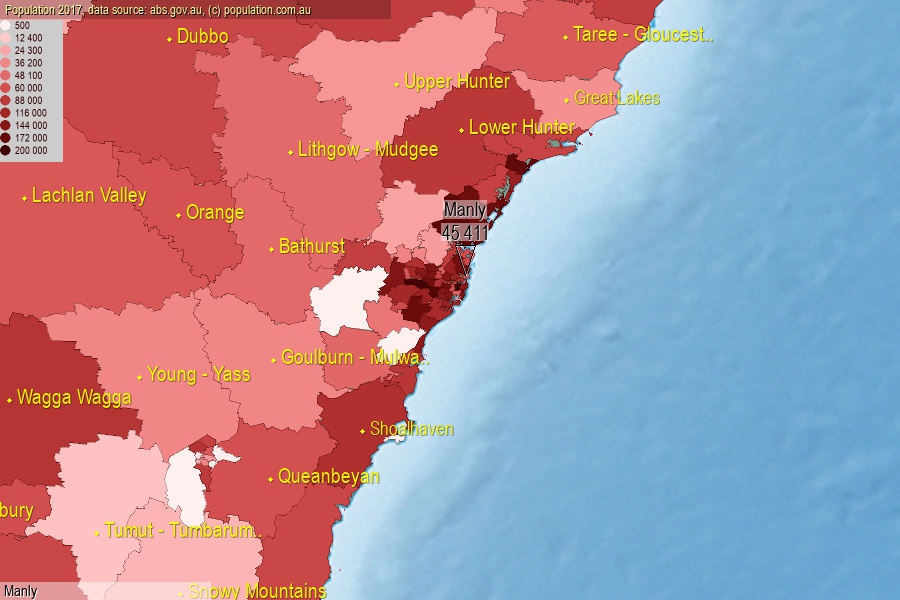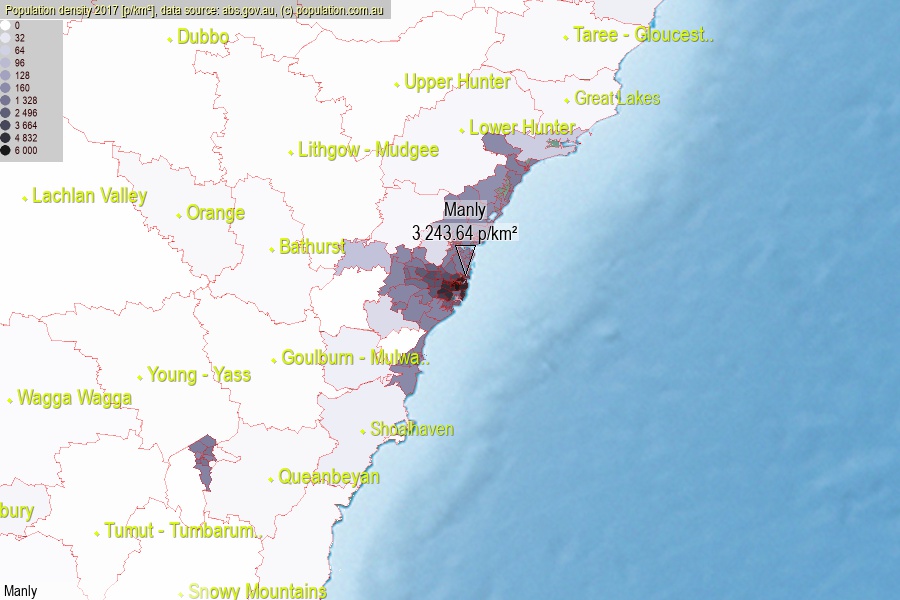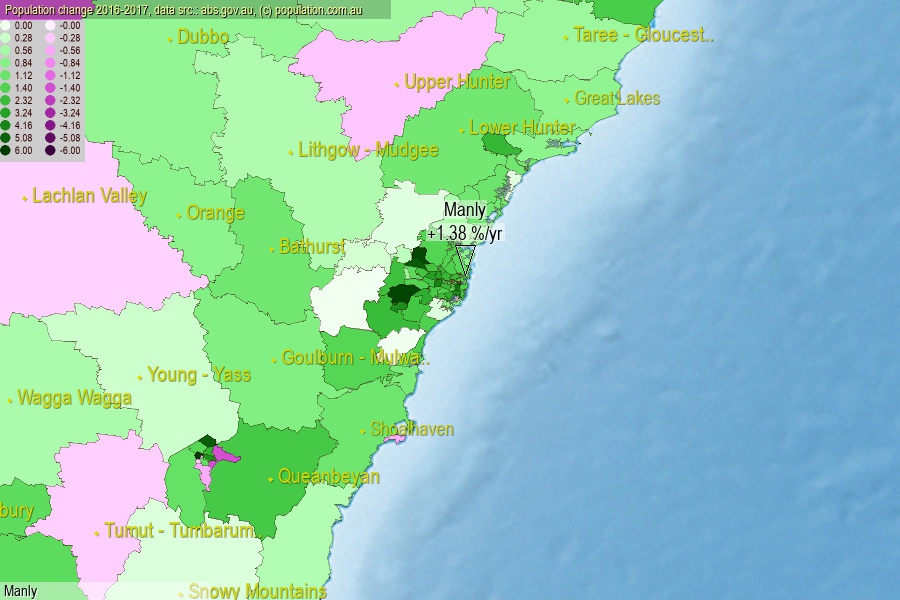 population.com.au
population.com.auLast official estimated population of Manly (as Statistical Area Level 3) was 45 411 people (on 2017-06-30)[2]. This was 0.18% of total Australian population and 0.571% of NSW population. Area of Manly is 14.00 km², in this year population density was 3 243.64 p/km² . If population growth rate would be same as in period 2016-2017 (+1.38%/yr), Manly population in 2025 would be 50 654. [0]



Click to enlarge. Manly is located in the center of the images.
Population [people], population density [p./km²] and population change [%/year] [2]
View borders » (new window) [4]
[1991-1992] +0.32 %/Y
[1992-1993] +0.12 %/Y
[1993-1994] +1.16 %/Y
[1994-1995] +0.44 %/Y
[1995-1996] +0.79 %/Y
[1996-1997] +0.14 %/Y
[1997-1998] +0.15 %/Y
[1998-1999] +0.45 %/Y
[1999-2000] +0.07 %/Y
[2000-2001] +1.73 %/Y
[2001-2002] +0.27 %/Y
[2002-2003] +0.11 %/Y
[2003-2004] +0.18 %/Y
[2004-2005] -0.05 %/Y
[2005-2006] +1.03 %/Y
[2006-2007] +1.92 %/Y
[2007-2008] +0.19 %/Y
[2008-2009] +2.73 %/Y
[2009-2010] +2.35 %/Y
[2010-2011] +2.19 %/Y
[2011-2012] +0.87 %/Y
[2012-2013] +1.10 %/Y
[2013-2014] +0.75 %/Y
[2014-2015] +0.85 %/Y
[2015-2016] +0.96 %/Y
[2016-2017] +1.38 %/Y
[0] Calculated with linear interpolation from officially estimated population
[1] Read more about SA3 and Australian Statistical Geography Standard (ASGS) on abs.gov.au
[2] Population data from Australian Bureau of Statistics (Population and density: 2017; change: 2016-2017)
[3] Digital Boundaries: Australian Statistical Geography Standard (ASGS) 2016.
[4] Border coordinates are simplifyed using Ramer-Douglas-Peucker algorithm.